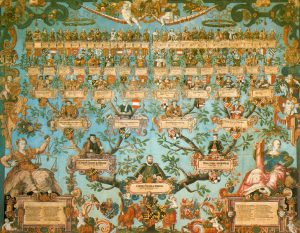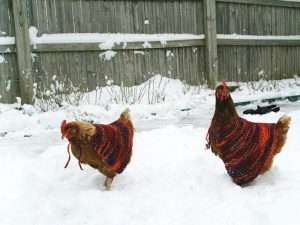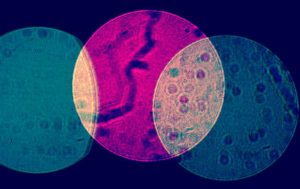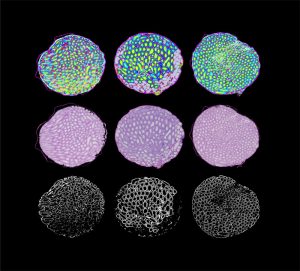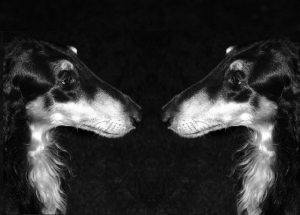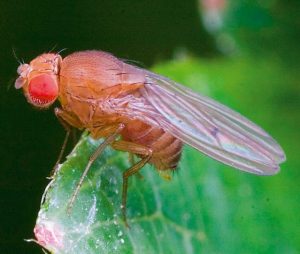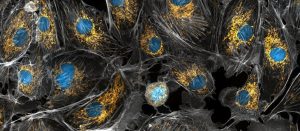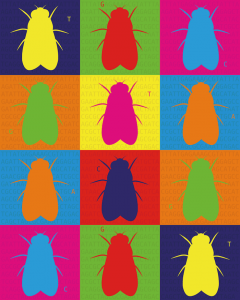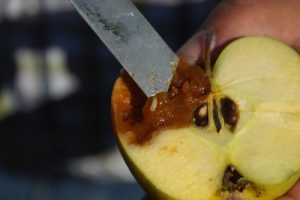Enter your address to receive notifications about new posts to your email.
Articles by Katie Pieper (29 results)
-
Germline immortality in C. elegans depends on epigenetic inheritance
Inheriting a trait from a grandparent doesn’t always involve their DNA sequences. In many organisms, some traits can be passed down for multiple generations via non-sequence based mechanisms, a phenomenon called transgenerational epigenetic inheritance. The most familiar example is that human disease risk might be influenced by the lifestyle of a person’s grandparents. But by…
-
Hot wings and snow birds: Extreme temperature adaptation in domestic chickens
Humans built the modern world with the help of domestic plants and animals. A byproduct of our many domestication experiments is a series of excellent long-term controlled evolutionary comparisons that are helping geneticists understand adaptation. In a study published in the May issue of G3, Fleming et al. identify genomic regions under natural selection in…
-
An overactive immune system alters the gut microbiome in Drosophila
Taking probiotics might be the latest health fad, but for people with inflammatory bowel diseases, the microbiome is a more serious matter. With these autoimmune diseases, the composition of the gut microbiome can have critical health consequences. In the June issue of GENETICS, Mistry et al. use fruit flies to determine whether immune system activity…
-
Housekeeping genes escape miRNA repression through alternative polyadenylation
Changing where the polyA tail is added to an mRNA transcript can fine-tune the tissue-specific expression of many genes, reports a Caenorhabditis elegans study published in the June issue of GENETICS. Blazie et al. show alternative polyadenylation (APA) allows transcripts to evade microRNA (miRNA) silencing in some tissues, allowing for tissue-specific expression of those genes.…
-
Behind the cover: Male infertility in the mouse Collaborative Cross
Fascinating discoveries sometimes emerge from the most daunting of experimental roadblocks. Designed to generate over 1,000 recombinant inbred mice lines for genetic mapping, the Collaborative Cross (CC) project unearthed astounding variation in male fertility when nearly 95% of the highly inbred CC lines went extinct. As part of the Multiparental Populations series in the June…
-
The push-and-pull evolution of tandem-duplicated drug-resistance genes
Two highly similar genes that contribute to drug resistance in a pathogenic yeast have been co-evolving as tandem duplicates for the past 134 million years—while maintaining distinct functions. This is the conclusion of a paper in the April issue of GENETICS by Lamping et al. that examines the evolutionary effects of ectopic gene conversion. Evolutionary…
-
Tools for transgenic studies in close relatives of D. melanogaster
Thanks to more than a hundred years of working with Drosophila melanogaster, geneticists have many powerful tools for precisely manipulating its genes. It has also become a model system for studying speciation and molecular evolution together with the other members of the melanogaster species group: D. simulans, D. mauritiana, D. yakuba, and D. santomea. However,…
-
Twenty years of the Worm Art Show
In 1997, Ahna Skop approached her graduate advisor, John G. White, about adding a worm-themed art show to the International C. elegans Conference he was organizing that year. “He said I could do whatever I wanted, but not to involve him,” she recalls. That year marked the very first Worm Art Show, which has since…
-
Incompatibility between mitochondrial and nuclear genomes isolates many nematode populations
Constant mutation and shaping by natural selection can make the once-identical genomes of isolated populations of organisms very different from one another. This genetic divergence can lead to two such populations no longer being able to interbreed successfully—speciation. In their paper in the March issue of G3, Lamelza and Ailion show that harmful interactions between…
-
50 years of molecular evolution in Drosophila
In the genomic era, population geneticists are flooded with molecular data on the evolution of natural populations. This deluge started in 1966 as a trickle of data from protein electrophoresis studies, including the landmark GENETICS papers published by Richard Lewontin and John Hubby. As Lewontin is honored this week at the Annual Drosophila Research Conference…
-
A single gene controls multiple feeding-related traits in fruit fly larvae
Fruit fly larvae have one goal: eat as much as possible. After the tiny worm-like larvae hatch from eggs embedded into the flesh of rotting fruit, they eat their way out. After days of gorging, they find a good spot to pupate and then emerge as adults. Fruit flies cannot grow after this transformation, however,…


